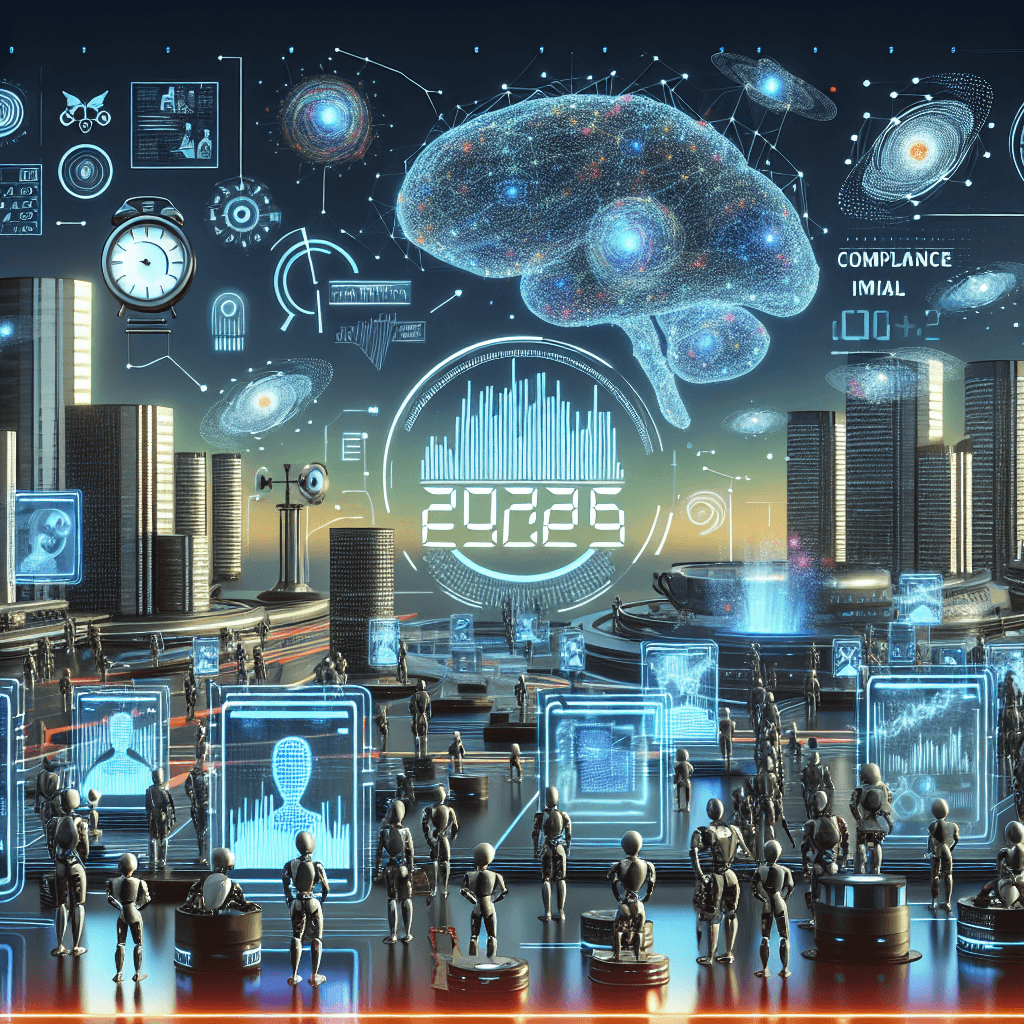In an age where technology is rapidly evolving, compliance monitoring has become an indispensable aspect of regulatory frameworks. As we step into 2025, the integration of artificial intelligence (AI) into compliance strategies is transforming how organizations manage adherence to laws and regulations. This article delves into the top AI tools that are set to revolutionize compliance monitoring in 2025.
The Shift Towards AI in Compliance
As businesses navigate increasing regulatory complexity, many are turning to AI-driven solutions. The sheer volume of data and the multitude of regulations make it crucial for organizations to adopt sophisticated tools that can keep pace. AI tools not only enhance efficiency but also minimize risks associated with non-compliance.
Why Compliance Monitoring is Essential
Compliance monitoring is not just a box-ticking exercise; it plays a vital role in safeguarding an organization’s reputation. Companies that neglect compliance risk facing hefty fines, legal repercussions, and damage to their brand image. As we move further into 2025, the stakes are higher than ever, making advanced compliance solutions a necessity rather than an option.
Harnessing Machine Learning for Robust Compliance
Machine learning, a subset of AI, is at the heart of many compliance monitoring tools. By analyzing past data and recognizing patterns, machine learning models can predict potential compliance risks and recommend proactive measures. This predictive capability is a game changer, allowing businesses to focus on rectifying issues before they escalate.
Natural Language Processing: Decoding Complex Regulations
One of the significant challenges in compliance is interpreting complex regulatory language. Natural Language Processing (NLP), another AI domain, is making strides in translating legal jargon into understandable terms. This technology allows compliance officers to stay abreast of regulatory changes seamlessly, ensuring they always meet the required standards.
Top AI Tools You Should Know in 2025
As we explore essential AI tools for compliance monitoring, here’s a breakdown of some of the top solutions making waves in 2025:
1. IBM Watson for Compliance
IBM Watson is renowned for its robust analytics capabilities. Leveraging AI, it offers predictive insights, helping organizations to identify and address compliance risks proactively. Its ability to analyze vast amounts of data quickly makes it one of the leading choices for enterprises.
2. Alteryx
Alteryx is a data analytics platform that has integrated AI components to enhance compliance monitoring. Its intuitive interface allows users to create complex analyses effortlessly, making it easier to visualize potential compliance pitfalls.
3. RiskWatch
RiskWatch employs AI to assess organizational risk comprehensively. By automating the compliance monitoring process, it enables organizations to maintain vigilance without the significant overhead typically associated with rigorous compliance systems.
4. Smartsheet
Famed for its project management capabilities, Smartsheet has expanded its offerings to include compliance monitoring tools powered by AI. This platform facilitates collaboration across teams, making compliance checks more manageable and efficient.
5. LogicGate
LogicGate automates compliance workflows using AI, significantly enhancing the speed at which organizations can respond to regulatory changes. Its user-friendly interface allows for easy customization, enabling companies to tailor the tool to their unique compliance needs.
6. Quantum Control
Quantum Control specializes in risk assessment and compliance monitoring. The incorporation of AI allows this tool to adapt quickly to regulatory changes, ensuring that organizations remain compliant in an ever-changing landscape.
The Benefits of Real-Time Compliance Monitoring
One of the primary advantages of AI tools is their ability to offer real-time compliance monitoring. This feature allows businesses to respond to potential violations immediately, reducing the risk of penalties. As regulations continue to evolve rapidly, the capacity for real-time insights will be invaluable.
Enhancing Employee Training Through AI
AI tools also play a pivotal role in employee training for compliance. By analyzing past compliance failures and successes, these tools can tailor training programs to address specific weaknesses. This targeted approach ensures that employees are better equipped to follow compliance protocols.
Integrating AI into Existing Compliance Frameworks
Businesses are often hesitant to overhaul existing systems when introducing AI tools. However, the key to successful integration lies in selecting tools that complement and enhance current processes. AI tools should seamlessly mesh with an organization’s existing compliance framework to maximize benefits.
Future Trends in AI Compliance Monitoring
As we look ahead, we anticipate significant developments in AI compliance monitoring. Future tools will likely incorporate augmented analytics, allowing businesses to derive deeper insights from their compliance data. Furthermore, advancements in blockchain technology may enhance transparency and accountability in compliance processes.
Coping with Cost Challenges
While investing in AI compliance tools is beneficial, many organizations struggle with cost. However, the long-term savings from avoiding penalties and improving operational efficiencies make these tools a wise investment. It’s crucial for companies to weigh the initial costs against potential risks associated with non-compliance.
Addressing Data Privacy Concerns
With new data privacy regulations emerging, organizations must ensure that their compliance tools comply with these laws. AI tools for compliance monitoring will need to integrate features that protect sensitive information while ensuring adherence to legal standards.
Building a Compliance-Centric Culture
Implementing AI in compliance monitoring is not just about technology; it’s about fostering a culture of compliance within an organization. Leadership must prioritize compliance and encourage employees to embrace AI tools as vital resources for maintaining regulatory standards.
Regulatory Abstinence: A Future Risk?
As organizations find themselves more reliant on technology, one challenge remains: the risk of complacency. Companies must remember that while AI can significantly enhance compliance efforts, human oversight is crucial. Regular checks and updates should be standard practice, ensuring that tools continue to align with compliance requirements.
Conclusion: Embracing the Future of Compliance Monitoring
As we transition into 2025, the importance of AI tools for compliance monitoring cannot be overstated. These tools are reshaping how organizations approach compliance, enabling them to respond rapidly to regulatory changes, mitigate risks, and foster a culture of accountability. By embracing these innovations, businesses can not only ensure compliance but also gain a competitive advantage in their respective industries. The future of compliance monitoring is here, and it is powered by AI.








